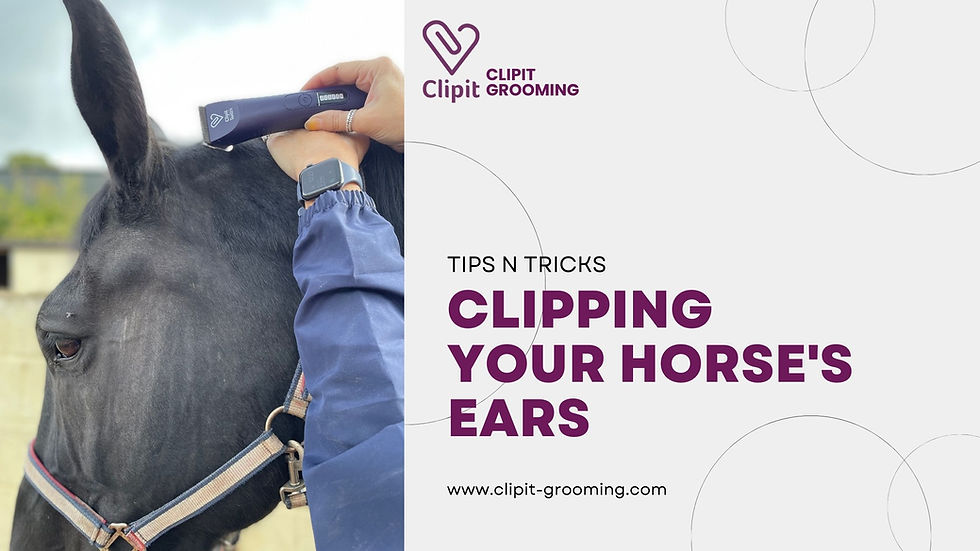How to Body Clip your Horse
- Aug 18, 2020
- 3 min read
Updated: Nov 24, 2023
To body clip your horse, you will need a large, heavy duty horse clipper with newly sharpened blades a can of Easi Oil Spray for lubrication and Ice Care Spray for cooling the blades.
Wear a Clipit Suit and a cap or bandanna to cover your hair: the Clipit suit with its repellent surface will not pick up the loose hair, they are a great help and will keep your temperature regulated.
The horse should be clean as possible, if weather or heated facilities permit, he should be given a bath, or if not, thoroughly groomed and cleaned with a hot towel all over. Of course, he must also be thoroughly dry.
When you start to clip, begin on a less sensitive area like the shoulder. Turn the clippers on and draw the machine backward down the shoulder several times to get the horse used to the vibration. Once he accepts it, you can begin to clip. Keep the bottom blades pressed evenly and lightly against the horse's skin, so that the hair is cut closely; use the same pressure for every stroke, or you will leave some areas of longer hair. Don't dig the edge or the corner of the blade into your horse's skin, this is uncomfortable and will raise a welt.
Make long fairly slow and steady strokes, overlapping each stroke by about an inch. The clippers must always work directly against the direction of the hair grows - you will have to turn the clippers to follow the swirls and contours of the horse's body.
Stop frequently to allow brush the hair away from the clippers and spray with the Easi Oil product, this will help to keep them cooler and lubricated. If your clipper starts a high-pitched, labouring noise this indicates that the blades are becoming clogged with hair and debris and need cleaning. Keep the air intake filter free from hair as you work, or the motor may begin to run hot.
If the blades do not cut efficiently, try tightening the tension a quarter turn at a time until you find the tension at which they produce a clean cut. Over tightening the tension will cause the blades to heat up and wear down quicker. When the blades will no longer produce a clean cut even with the tension at its tightest, they are too dull and need resharpening. Hot blades are uncomfortable for the horse and do not cut efficiently. Besides, both you and the horse may be glad for a rest, so allow them time to cool down.
The most efficient way to clip is to work in sections, usually from back to front. Clip each section completely, brush it off with a body brush. When clipping the head, patience and care is needed. If you have small animal clippers available with #10 blades, you will find it much easier to manipulate these around the face and hollows of the eyes.
Clip upward along the jaw to the edge of the cheekbone and up to the eye and the ear. Putting cotton wool into the ears may help the horse accept clipping of his head better, but the bones of the skull transmit sound, and for some horses, the vibration and noise is a real trial.
To clip the girth area and the inside of the foreleg, have an assistant who can hold up the horse's foreleg by the cannon bone and stretch it well forward. This stretches the skin behind the elbow and allows you to clip the girth area.
When clipping, stop frequently to give your horse a rest and a pat, and to brush clipped hair away from the area you have been working on. Check your work and catch any mistakes that need re-clipping.
After clipping your horse's coat will show a mousey look because any remaining dandruff and scurf is now close to the surface and visible. With hot water, towel treat the coat and it will quickly clean the coat and get down to the skin, leaving a shine and softness of the coat. To avoid clipping lines on your horse, read this









Comments